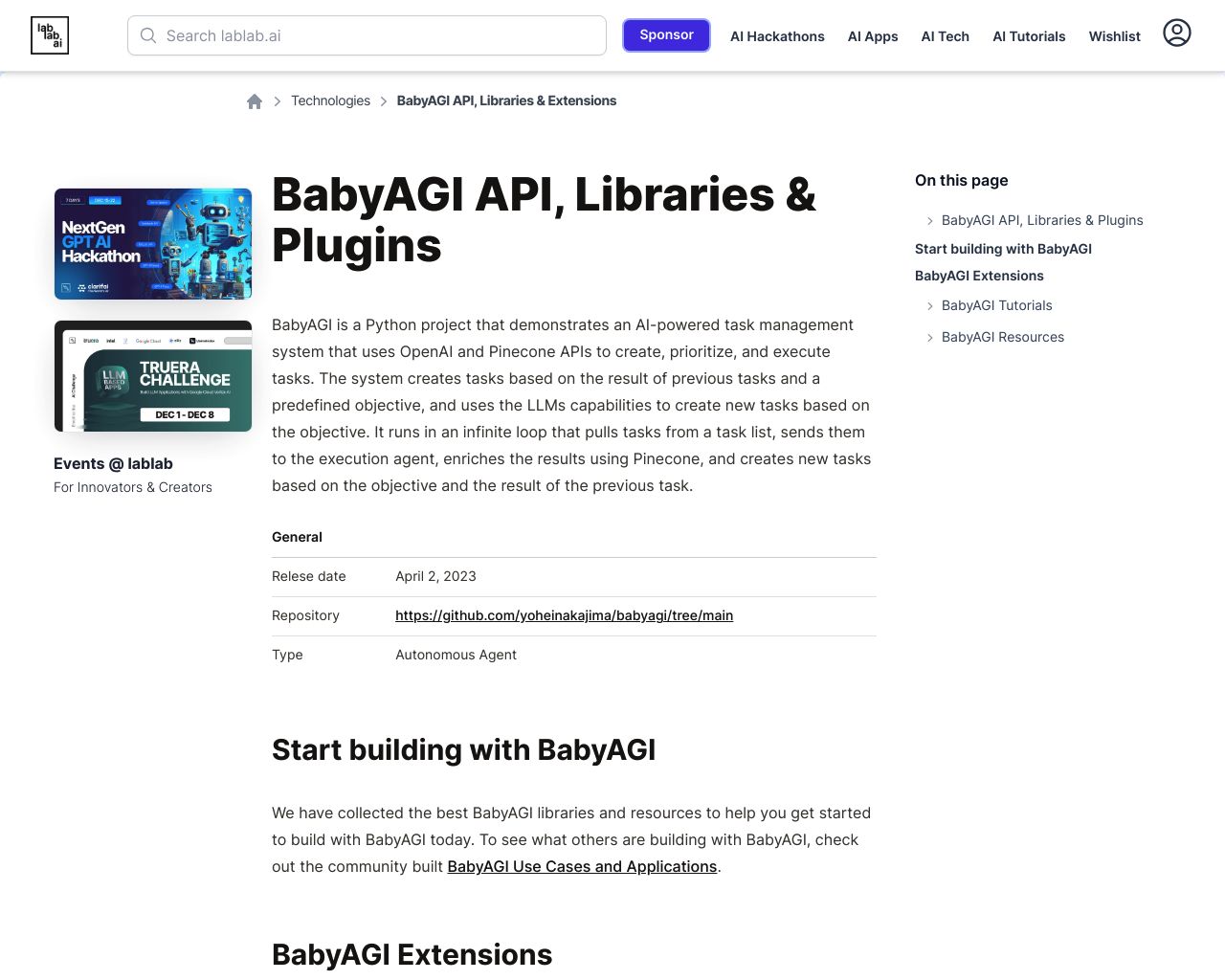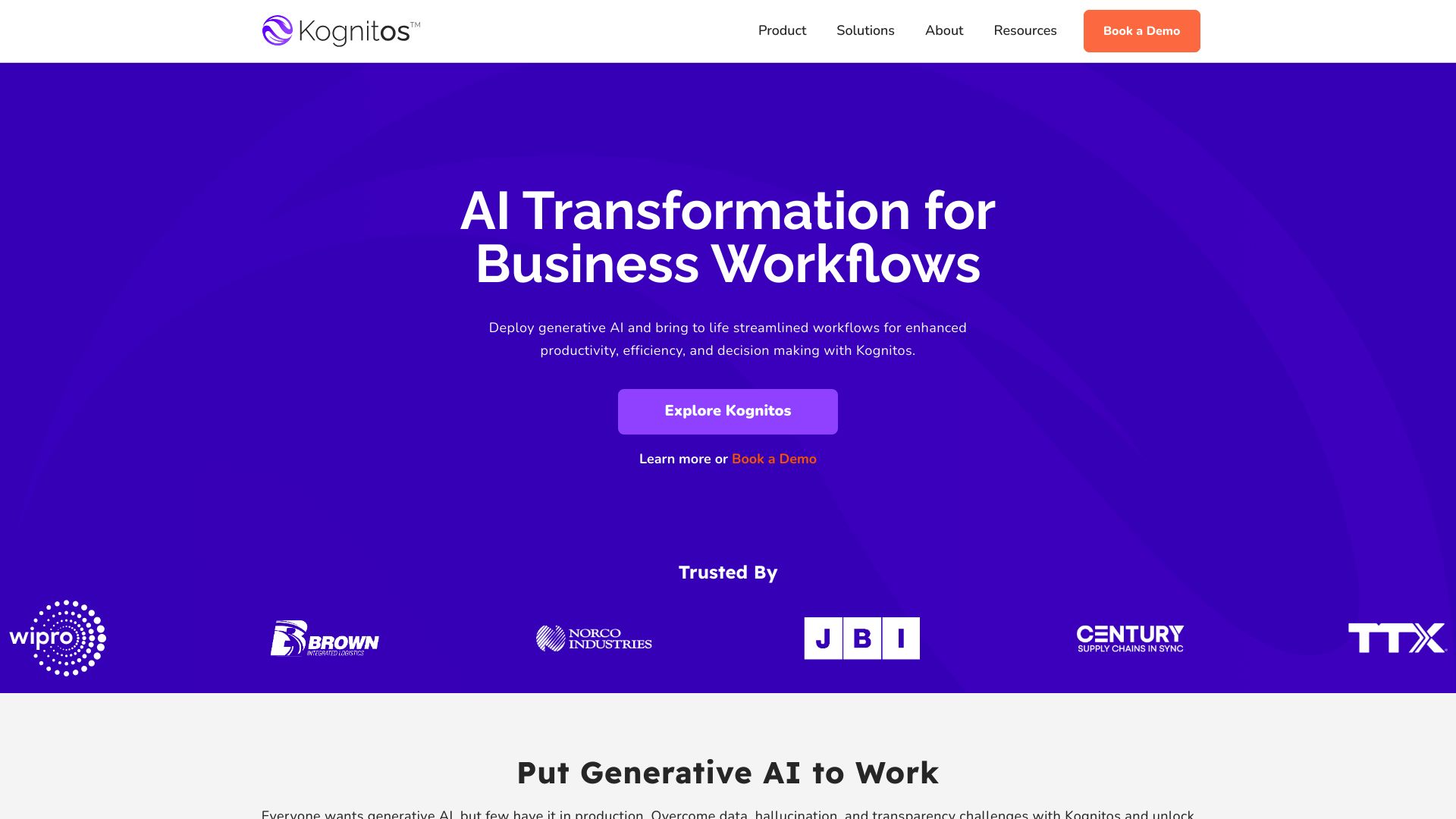BabyAGI vs. Kognitos: AI Automation Platforms Compared
AI-powered automation platforms are reshaping business operations, offering unprecedented efficiency and adaptability. This review compares BabyAGI, an open-source project simulating human-like cognitive processes, with Kognitos, a commercial solution revolutionizing workflow automation through natural language interaction. We’ll explore their unique approaches to task management, automation capabilities, and user accessibility.
By examining these platforms alongside SmythOS, we’ll uncover how each addresses the evolving needs of businesses seeking to harness AI’s potential. Whether you’re a developer, business leader, or AI enthusiast, this comparison will guide you through the strengths and limitations of each platform, helping you make an informed decision for your automation needs.
BabyAGI Overview
BabyAGI pioneers an open-source approach to artificial intelligence that simulates human-like cognitive processes for autonomous task management. Developed by Yohei Nakajima, this innovative project represents a significant step towards artificial general intelligence (AGI).


BabyAGI’s core functionality revolves around autonomous task generation, prioritization, and execution. Unlike traditional AI systems focused on specific tasks, BabyAGI creates and manages a dynamic list of subtasks based on given objectives. This system continuously learns from previous tasks and adapts to new challenges, mimicking human cognitive processes.
BabyAGI creates and manages a dynamic list of subtasks based on given objectives. This system continuously learns from previous tasks and adapts to new challenges, mimicking human cognitive processes.
Leveraging advanced natural language processing capabilities from OpenAI and vector databases like Pinecone, BabyAGI stores and retrieves task results efficiently. This integration of memory and context handling allows the system to recall and utilize past information to inform current and future tasks.
BabyAGI excels in problem-solving by breaking down objectives into manageable tasks, executing them, and iterating based on results. This approach enables it to address complex issues across various fields, from customer service and healthcare to education and creative writing. However, BabyAGI lacks some features common in more comprehensive AI platforms, such as a visual builder, no-code editor, or specific debugging tools.
While BabyAGI offers powerful autonomous capabilities, it may present challenges for users seeking a more user-friendly interface or extensive integration options. The platform requires coding knowledge, particularly in Python, which might limit accessibility for non-technical users. Despite these limitations, BabyAGI’s innovative approach to AI, focusing on autonomous task management and human-like learning, positions it as a valuable tool in the ongoing development of artificial general intelligence.
Kognitos Overview
Kognitos revolutionizes business automation with its AI-powered platform. This innovative solution allows users to create and manage complex workflows using plain English, eliminating the need for extensive coding knowledge.


Kognitos integrates traditional logic with generative AI, enabling powerful and efficient automation. The system learns over time through natural dialogue with users, adapting to changes and variations in processes. This self-learning capability sets Kognitos apart from traditional robotic process automation (RPA) tools, which often require constant bot management.
Kognitos integrates traditional logic with generative AI, enabling powerful and efficient automation. The system learns over time through natural dialogue with users, adapting to changes and variations in processes.
The platform excels in document processing, Excel manipulation, email handling, and seamless integration with systems like Salesforce. Kognitos runs entirely from a browser, using stable API-based automations to ensure reliability and ease of use. This cloud-based approach eliminates the limitations of Windows-based solutions and supports multiple operating systems.
While Kognitos offers impressive capabilities, it may present a learning curve for users unfamiliar with AI-driven automation. The platform’s reliance on natural language processing could potentially lead to misinterpretations in complex scenarios. Additionally, as with any cloud-based solution, users must consider data security and privacy implications when handling sensitive information.
Kognitos positions itself as a leader in the AI automation landscape, aiming to democratize access to advanced technology. By focusing on user-friendly interfaces and leveraging the power of generative AI, Kognitos sets a new standard for how businesses can streamline operations and adapt to evolving industry demands.
Feature Comparison
BabyAGI and Kognitos offer distinct approaches to AI-driven task management and automation. BabyAGI excels in autonomous task generation and execution, using advanced natural language processing to break down complex objectives into manageable subtasks. Its integration with vector databases like Pinecone enables efficient storage and retrieval of task results, enhancing its memory and context handling capabilities.
Kognitos, on the other hand, revolutionizes business automation by allowing users to create and manage workflows using plain English. This approach significantly lowers the barrier to entry for non-technical users, a feature not present in BabyAGI’s more code-centric environment. Kognitos’ self-learning capability, which adapts to changes through natural dialogue with users, provides a level of flexibility that BabyAGI’s static task management system lacks.
In terms of security and deployment, both platforms have gaps. BabyAGI doesn’t offer specific features for data encryption, OAuth, or IP control, which are crucial for enterprise-level security. Kognitos, while more business-oriented, also lacks explicit mentions of these security features in the provided information. Neither platform specifies deployment options such as APIs or webhooks, limiting their integration capabilities compared to more comprehensive solutions like SmythOS. Our platform addresses these gaps by offering robust security features and versatile deployment options, ensuring that businesses can safely and flexibly integrate AI automation into their existing workflows.
Feature Comparison Table
| BabyAGI | Kognitos | SmythOS | |
|---|---|---|---|
| CORE FEATURES | |||
| Hosted Agents (Dev, Production) | ❌ | ✅ | ✅ |
| Environments (Dev, Production) | ❌ | ✅ | ✅ |
| Visual Builder | ❌ | ❌ | ✅ |
| No-Code Options | ❌ | ✅ | ✅ |
| Explainability & Transparency | ❌ | ✅ | ✅ |
| Human-AI Interaction | ❌ | ✅ | ✅ |
| Audit Logs for Analytics | ❌ | ✅ | ✅ |
| Agent Work Scheduler | ❌ | ✅ | ✅ |
| Logs & Monitoring | ❌ | ✅ | ✅ |
| SECURITY | |||
| Constrained Alignment | ❌ | ❌ | ✅ |
| IP Control | ❌ | ❌ | ✅ |
| COMPONENTS | |||
| Foundation AIs | ❌ | ✅ | ✅ |
| Zapier APIs | ✅ | ❌ | ✅ |
| Data Lakes | ❌ | ❌ | ✅ |
| DEPLOYMENT OPTIONS (EMBODIMENTS) | |||
| Deploy as Webhook | ✅ | ❌ | ✅ |
| Staging Domains | ❌ | ✅ | ✅ |
| Production Domains | ❌ | ✅ | ✅ |
| Deploy as Site Chat | ✅ | ❌ | ✅ |
| Deploy as Scheduled Agent | ❌ | ✅ | ✅ |
| Deploy as GPT | ✅ | ❌ | ✅ |
| DATA LAKE SUPPORT | |||
| Hosted Vector Database | ✅ | ❌ | ✅ |
| Sitemap Crawler | ❌ | ❌ | ✅ |
| YouTube Transcript Crawler | ❌ | ❌ | ✅ |
| URL Crawler | ✅ | ❌ | ✅ |
Best Alternative to BabyAGI and Kognitos
SmythOS stands out as the superior alternative to BabyAGI and Kognitos, offering a comprehensive platform for AI agent development and deployment. Our drag-and-drop interface simplifies the creation of complex AI workflows, making advanced AI functionalities accessible to users with varying levels of technical expertise. This visual approach to agent building sets us apart from BabyAGI’s code-centric environment and surpasses Kognitos’ plain English automation by providing a more intuitive and versatile development process.
SmythOS stands out as the superior alternative to BabyAGI and Kognitos, offering a comprehensive platform for AI agent development and deployment.
We pride ourselves on our extensive integration ecosystem, supporting a wide array of AI models, APIs, and tools. This flexibility allows SmythOS to seamlessly fit into virtually any workflow or business process, addressing a key limitation of both BabyAGI and Kognitos. Our platform’s ability to integrate with popular services like Slack, Trello, and GitHub, as well as support for various AI models from providers like OpenAI and Hugging Face, ensures that users can create tailored solutions for their specific needs without the constraints found in more limited platforms.
Unlike BabyAGI and Kognitos, SmythOS offers robust security features, including data encryption, OAuth support, and IP control. These enterprise-level security measures are crucial for businesses handling sensitive data, addressing a significant gap in the offerings of our competitors. Additionally, our platform provides versatile deployment options, allowing users to deploy their AI agents as APIs, webhooks, scheduled tasks, or even as ChatGPT plugins. This level of deployment flexibility is unmatched by either BabyAGI or Kognitos.
SmythOS excels in scalability and performance, supporting enterprise-level deployments while maintaining efficiency. Our platform includes features like an Agent Work Scheduler and comprehensive logs and monitoring tools, enabling users to automate complex workflows and maintain oversight of their AI operations. These capabilities go beyond what BabyAGI and Kognitos offer, providing a more robust and manageable environment for AI agent deployment at scale.
By choosing SmythOS, users gain access to a platform that not only addresses the limitations of BabyAGI and Kognitos but also provides a forward-thinking solution for AI agent development. Our commitment to user-friendly design, extensive integration options, and advanced features ensures that SmythOS remains at the forefront of AI technology, empowering users to create sophisticated AI solutions with unparalleled ease and efficiency.
Conclusion
BabyAGI and Kognitos offer innovative approaches to AI-driven task management and automation, each with unique strengths. BabyAGI excels in autonomous task generation and execution, leveraging advanced natural language processing to break complex objectives into manageable subtasks. Kognitos revolutionizes business automation by allowing users to create workflows using plain English, significantly lowering the entry barrier for non-technical users.
However, both platforms have limitations. BabyAGI’s code-centric environment may challenge non-developers, while Kognitos’ reliance on natural language processing could lead to misinterpretations in complex scenarios. Neither platform fully addresses enterprise-level security needs or offers comprehensive deployment options.
SmythOS emerges as the superior choice, addressing these limitations while offering a more comprehensive suite of features. Our platform combines the strengths of both BabyAGI and Kognitos while adding crucial capabilities like robust security measures, versatile deployment options, and an intuitive visual builder. SmythOS supports multimodal interactions, problem-solving capabilities, and scalable embodiments such as APIs, chatbots, and scheduled agents.
We invite you to experience the power of SmythOS firsthand. Create a free account today and discover how our platform can transform your AI workflow, offering unparalleled flexibility, security, and ease of use. With SmythOS, you’ll have access to 300,000+ seamless integrations and the ability to deploy AI agents anywhere, revolutionizing your approach to AI-driven solutions.
Last updated:
Disclaimer: The information presented in this article is for general informational purposes only and is provided as is. While we strive to keep the content up-to-date and accurate, we make no representations or warranties of any kind, express or implied, about the completeness, accuracy, reliability, suitability, or availability of the information contained in this article.
Any reliance you place on such information is strictly at your own risk. We reserve the right to make additions, deletions, or modifications to the contents of this article at any time without prior notice.
In no event will we be liable for any loss or damage including without limitation, indirect or consequential loss or damage, or any loss or damage whatsoever arising from loss of data, profits, or any other loss not specified herein arising out of, or in connection with, the use of this article.
Despite our best efforts, this article may contain oversights, errors, or omissions. If you notice any inaccuracies or have concerns about the content, please report them through our content feedback form. Your input helps us maintain the quality and reliability of our information.
